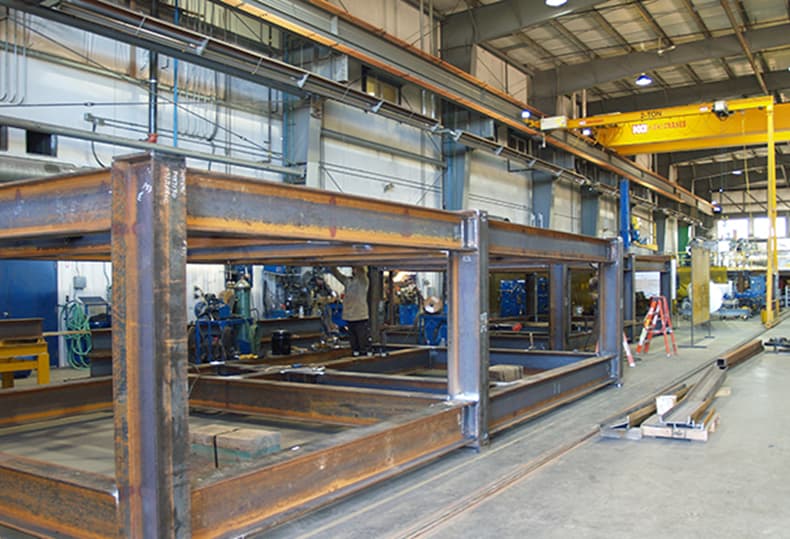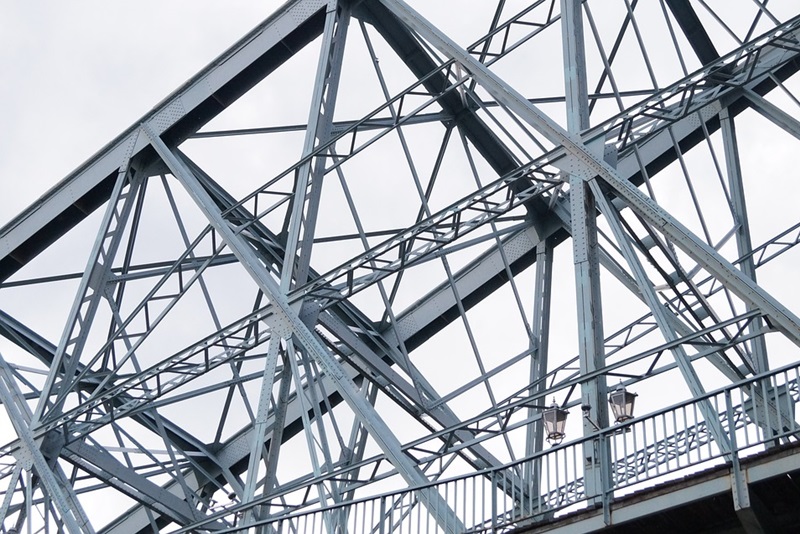Comprehensive Steel Fixing Providers for Construction Projects
Comprehensive Steel Fixing Providers for Construction Projects
Blog Article
Cutting-edge Trends in Steel Manufacture: Enhancing Longevity and Precision
In the world of steel fabrication, the search of sturdiness and precision has led to a wave of cutting-edge patterns that are improving the sector. From innovations in welding modern technologies to the assimilation of robot automation in construction processes, the landscape of steel production is evolving rapidly. High-strength alloy development, combined with the utilization of 3D modeling and simulation software program, is pressing the limits of what is attainable in regards to architectural stability and accuracy. The expanding focus on sustainable methods in steel production is not only driving efficiency yet also fostering a more environmentally aware approach to manufacture. These patterns are not just forming the here and now however additionally preparing for the future of steel construction, guaranteeing more enhancements in toughness and accuracy.
Advanced Welding Technologies
In the world of steel fabrication, the fostering of sophisticated welding technologies has actually significantly transformed the market's approach to achieving superior top quality and precision in architectural welds. Advanced welding modern technologies, such as laser beam welding and rubbing stir welding, have emerged as game-changers in the area. By leveraging these sophisticated welding strategies, steel fabricators can raise the durability, toughness, and accuracy of their architectural welds, satisfying the progressively demanding needs of contemporary construction tasks.
Robotic Automation in Manufacture
Embracing robot automation has actually come to be a cornerstone of modern steel construction practices, streamlining procedures and improving performance throughout the sector. Robotics are changing the method steel parts are manufactured, offering unrivaled precision and speed while decreasing human error. These automated systems can manage repeated tasks with regular precision, leading to better final product.
One trick benefit of robotic automation in steel construction is the capacity to function around the clock without tiredness, dramatically increasing production outcome. This continual operation reduces downtime and increases job timelines, inevitably saving costs for manufacturers. Furthermore, robots can be set to do detailed tasks that may be challenging or hazardous for human workers, enhancing safety in the office.
Additionally, robot automation enables smooth assimilation with various other digital technologies, such as computer-aided style (CAD) software application and Net of Things (IoT) systems (steel fabricators melbourne). This interconnected method enhances interaction between different stages of construction, optimizing process and ensuring real-time tracking and control. As the steel manufacture market continues to evolve, robot automation stands out as a transformative force driving effectiveness and precision in making procedures

High-Strength Alloy Advancement
The innovation of high-strength alloy growth in steel manufacture is improving the industry's method to enhancing product longevity and performance. High-strength alloys are engineered to exhibit premium mechanical homes, such as increased tensile stamina, sturdiness, and deterioration resistance compared to traditional steel qualities. By incorporating these advanced alloys right into manufacture processes, suppliers can generate components that hold up against greater anxiety levels and rough environments, bring about even more reliable and long lasting end items.
One trick advantage of high-strength alloy development is the capacity to lower material thickness without jeopardizing architectural stability. This not just results in lighter-weight parts yet additionally adds to cost financial savings and boosted efficiency in manufacture and setting up procedures. The boosted strength-to-weight ratio of these alloys allows important link for the design and building and construction of frameworks with higher load-bearing capacities while reducing general weight.
3D Modeling and Simulation Software Application
Developments in steel fabrication processes have actually been considerably moved by the combination of cutting-edge 3D modeling and simulation software application tools. These tools enable fabricators to develop detailed virtual versions of their projects, enabling them to envision the final product with accuracy before any manual labor begins. By mimicing numerous anxiety aspects, environmental conditions, and structural lots, makers can enhance designs for improved resilience and performance. Additionally, 3D modeling and simulation software application improve the production process by determining potential issues early, minimizing the demand for pricey rework and lessening product waste.

Sustainable Practices in Steel Manufacturing
Integrating sustainable practices into steel manufacturing procedures is important for lessening ecological influence and making sure long-lasting resource accessibility. One vital lasting practice is the fostering of energy-efficient innovations to reduce greenhouse gas discharges during the steel manufacturing procedure. This includes utilizing renewable resource sources, such as solar or wind power, to power steel plants and executing energy-efficient equipment to maximize energy usage.
An additional vital element of sustainable steel production is the accountable sourcing of raw products. This entails making certain that the iron ore and various other resources made use of in steelmaking are obtained from honest and environmentally pleasant sources. By promoting transparency in the supply chain and adhering to stringent environmental criteria, steel makers can lessen the adverse influences of resource extraction on regional environments and areas.

Final Thought
In conclusion, the innovative fads in steel manufacture such as innovative welding read here technologies, robotic automation, high-strength alloy growth, 3D modeling and simulation software program, and lasting techniques are improving the sturdiness and accuracy of steel products. These innovations are transforming the steel fabrication sector by enhancing performance, high quality, and sustainability. It is clear that the future of steel construction lies in embracing these sophisticated technologies to satisfy the demands of modern-day construction and manufacturing sectors.
In the world of steel manufacture, the search of durability and precision has actually led to a wave of innovative trends that are improving the industry.In the world of steel fabrication, the adoption of cutting-edge welding modern technologies has actually considerably reinvented the sector's approach to attaining superior quality and precision in architectural welds. As the steel manufacture market continues to develop, robot automation stands out as a transformative pressure driving performance and accuracy in making procedures.
Moreover, recycling and recycling steel scrap and waste materials play a significant function in boosting the sustainability of steel manufacturing. steel fabrication melbourne.In dig this verdict, the cutting-edge patterns in steel construction such as sophisticated welding technologies, robotic automation, high-strength alloy advancement, 3D modeling and simulation software program, and sustainable practices are improving the longevity and precision of steel items
Report this page